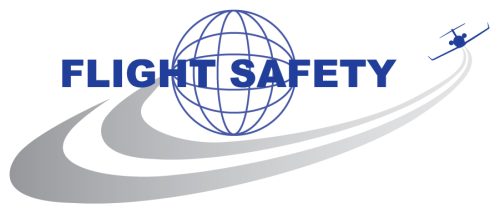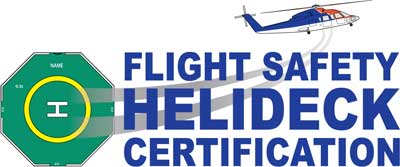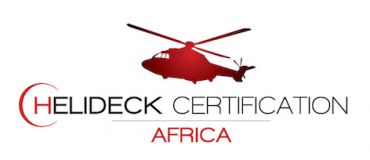

CAP 437 HELIDECK CERTIFICATION & FRICTION TESTING
Flight Safety Helideck Certification and Helideck Certification—Africa are part of the Flight Safety group of companies. With experience worldwide, both companies are positioned to offer advice and certification to International, UK CAP 437 and International Civil Aviation Organisation (ICAO) publication Annex 14 Volume 2 Standards for helideck and land based facilities, including specialist shipping requirements such as luxury yachts.
Certification extends not only to the helideck itself but also to helideck operations, safety and procedures – fuel installations where applicable are audited in accordance with best industry practice.
Whether advice provided during initial construction, helideck inspections, or the combination helideck inspection and operational safety audit, the Flight Safety group of Companies have the expertise and trained personnel to ensure that CAP 437 compliancy levels are maintained and helicopter operations are conducted to the highest levels of operational safety.
HELICOPTER LANDING SITE (HLS) DESIGN
Design Criteria Analysis For Permanent/Semi Permanent On-Shore Helicopter Landing Sites
The Helicopter Landing Site design is in accordance with UKCAP 437, I.C.A.O. Annex 14 VOL II and Australian CAAP 92-2(1) guidelines for the establishment and use of helicopter landing sites (HLS).
In the absence of relevant national legislation, Flight Safety undertook to introduce an interim solution, supported by current appropriate international regulations and accepted practices that would withstand legal review.The on-shore HLS design combines the best attributes of both offshore and onshore design principles adjusted to the local operating environment and includes the introduction of Night Vision Goggle capability for on-shore operations.
ISO 9001:2015 QUALITY
Within this high risk realm we are committed to exceeding the expectations of our clients and the industry by surpassing contract performance and maintaining a high level of integrity to ensure that safety is always the predominant consideration.
We value the skills, professionalism, ethics and commitment of our staff and are committed to providing them the resources and opportunity to develop their initiative, talents and creativity to maximise their contribution for the success of our company and the continued satisfaction of our clients.
As a team we strive, at all times, to both protect and enhance the reputation of Flight Safety for providing the highest standard of quality in all its activities.
To that end, and in our commitment to continual improvement, we have established quality and management systems, based on the international standard ISO 9001:2015 as well as the Safety System requirements of the Civil Aviation Safety Authority of Australia (CASA).
The Managing Director, as the Accountable Manager, is directly responsible for the performance of this Quality Management System.
The Company’s commitment, as a provider of external aviation audit and risk management services, together with other aviation support services is dedicated to the following:
- A clear vision of the company’s policies, goals and objectives.
- The continuous development and upgrading of training programs.
- The achievement of the highest levels of safety through the continual development and maintenance of a corporate ‘culture’ focusing on quality and safety. We are determined to create a safe working environment for all personnel in all our operations.
- Provision, to our clients, of the highest standard of reliability and performance at a competitive price.
- The development and maintenance of mutually beneficial relationships with clients and service providers alike.
- Provision of all necessary resources and support to ensure the effective operation of the Company’s quality and safety systems.
- Involvement of all staff in the continual improvement of the Company’s processes.
- Regular monitoring and reviewing of all Company systems and processes to ensure continual compliance and improvement.
- The constructive use of feedback from customers and staff to identify opportunities for improvement and rectify shortcomings in our service.
OUR INSPECTION METHODOLOGY
Inspection Methodology
Flight Safety applies typical ISO 9001:2015 auditing techniques, such as opening meeting, only auditing with auditee key personnel present, closing meeting with mutual agreement on non-compliances based on objective evidence. Checklists are used as an aide-mémoire during the audit.
This methodical process is recorded in a comprehensive final report that includes digital photographic records of all relevant aspects of the audit.
Post inspection guidance is offered as to the most appropriate corrective and preventative action. Certification extends not only to the helideck itself but also to helideck operations, safety and procedures – fuel installations where applicable are audited in accordance with best industry practice.
Traditionally, helideck inspections have been carried out as a stand-alone exercise. Flight Safety Helideck Certification and Helideck Certification – Africa combine the helideck inspection with the operational helicopter service provider audit, maximising the benefit obtained from a combined audit process as the audit results are based on a co-operative analytical resultant, providing the most effective aviation safety oversight assessment possible.
Risk Assessment
Flight Safety uses qualitative and quantitative risk assessment techniques developed specifically for all types of aviation activities as described.
Risk Management
Flight Safety integrates risk management into quality management control structures.
Inspection Reporting
Flight Safety has introduced a new audit reporting technique whereby an Air Operating Company is audited accorded to a grading system, allowing the results to be graphed – providing a one page executive summary of the organisation broken down into departmental results.
The detail of the audit can then be followed back into the report if required. The significance of this is enormous, as it means there is a tangible aspect that can be measured and compared.
This standardised model applied nationally, internationally or within a civilian or military regime produces uniform results, allowing for accurate graded indexing. Indexed safety can benefit the Regulatory Authority, or by virtue of an announced “grading”, create competitive reaction that fosters continual improvement.
Flight Safety specialises in incident/accident systems analyses where organisational systems and procedures are examined to identify causal failures, once this has been completed it is then possible to apply corrective/preventative actions.
OUR CLIENTS
The Flight Safety group of Companies operations are established in various national and international markets. We are the permanently appointed aviation advisors for various companies involved in the resource industry, military, public and private sectors.
The Flight Safety group of Companies operations are also involved in post accident/incident – AOC Management/Safety Management systems investigation and analysis on behalf of various clients, usually requested by the Board or executive management as a pro-active active accident prevention strategy.
RESOURCES & LINKS
External Documents
CAP 437: Standards for Offshore Helicopter Landing Areas
Relevant Websites
Helideck Certification – Africa – sister company to FSHC
www.helideckcertification.comAustralian Government Civil Aviation Safety Authority
www.casa.gov.auInternational Civil Aviation Organisation
www.icao.int
CONTACT FLIGHT SAFETY
+61 (0)7 5448 2788
+61 (0) 439 031 654
P.O. Box 676, Coolum Beach, Queensland, Australia, 4573
office@flightsafety.com.au
APPROVED BY LRQA TO ISO 9001:2015 STANDARD
ISO 9001:2015 Qualified Aviation Auditor/Risk Assessors and Companies approved by LRQA to ISO 9001:2015 standard for:
Flight Safety Pty Ltd & Flight Safety Africa Pty Ltd
External Aviation Safety Audit and Inspection, Risk Assessment, Consultancy (including independent accident, incident and organisational system
investigation) and Training services. Helideck, Helicopter Landing Site, and Helipad – Layout Design Appraisal, Helicopter Landing
Structure Suitability Assessment, Friction Testing, Safety and Operational Assessment and Certification.
Flight Safety Helideck Certification Pty Ltd & Helideck Certification–Africa Pty Ltd
Helideck, Helicopter Landing Site, and Helipad – Layout Design, Friction Testing, Training, Safety and Operational Assessment and Certification.
Aeronautical Enterprises
Training and Consultation.
Flight Safety refers to the Flight Safety group of Companies that include; Flight Safety Pty Ltd (ACN 108 080 208), Aeronautical Enterprises Pty Ltd (ACN 116 737 878), Flight Safety Helideck Certification Pty Ltd (ACN 134 088 878) and Vertiport Safety Pty Ltd (ACN 668 156 232).
Flight Safety Africa, Helideck Certification – Africa, and Flight Safety New Zealand Pty Ltd.






